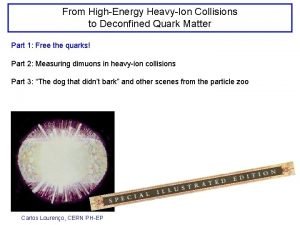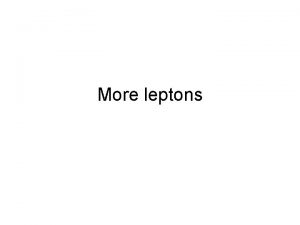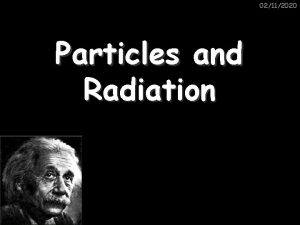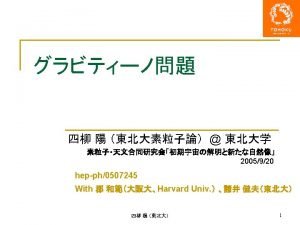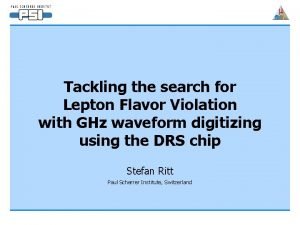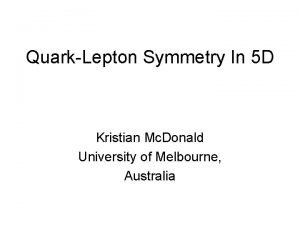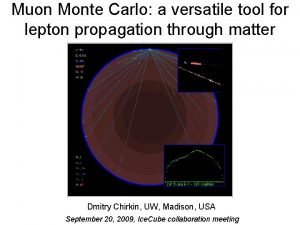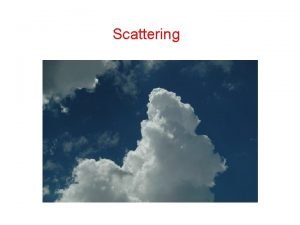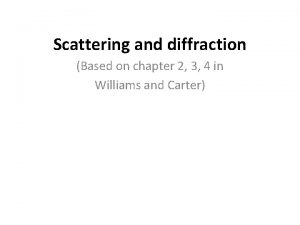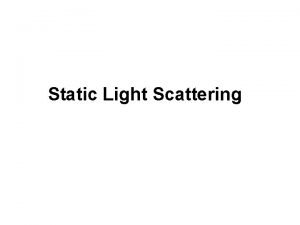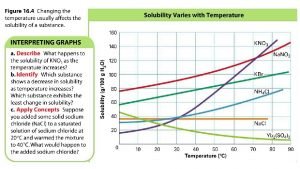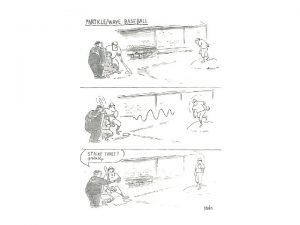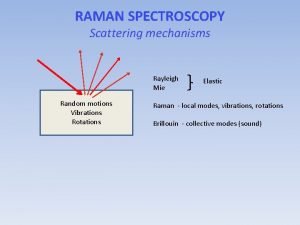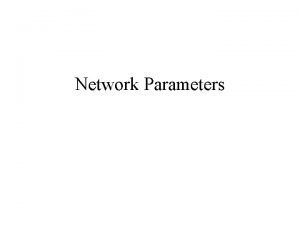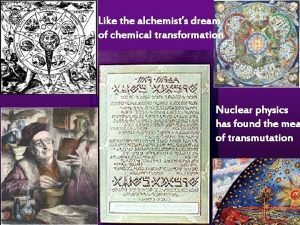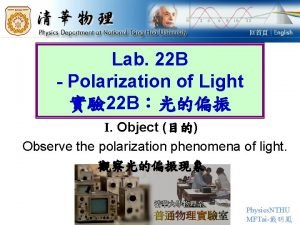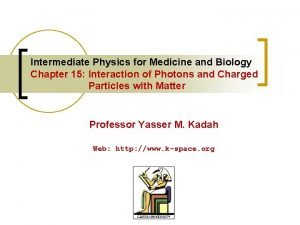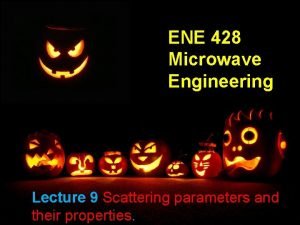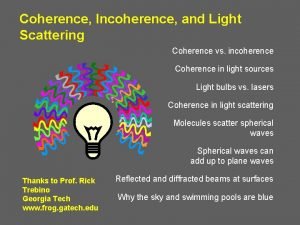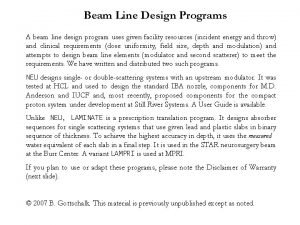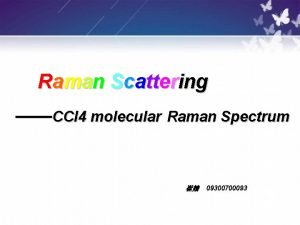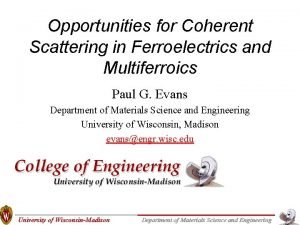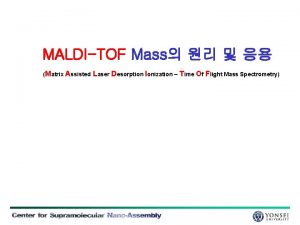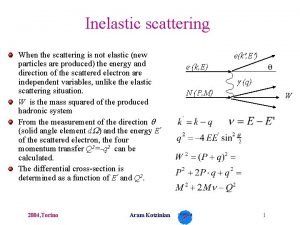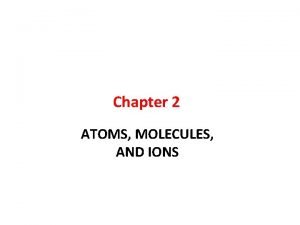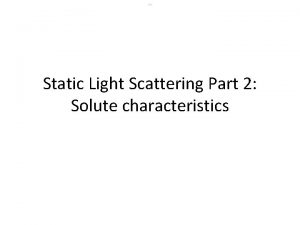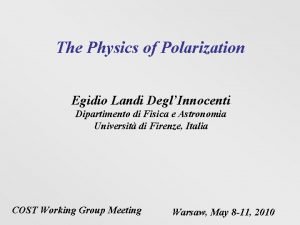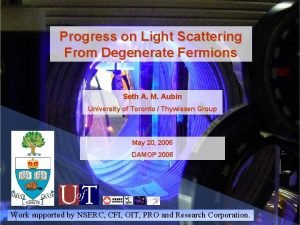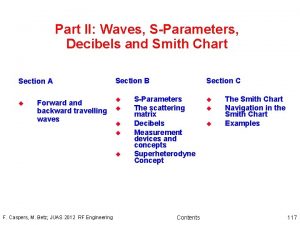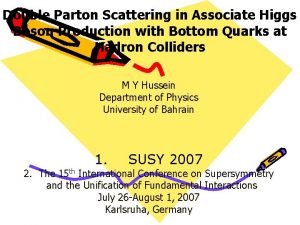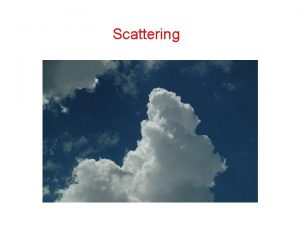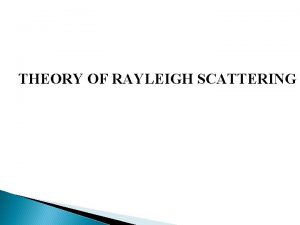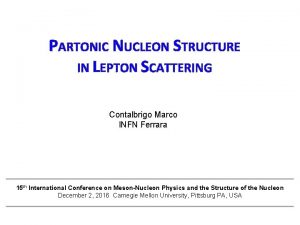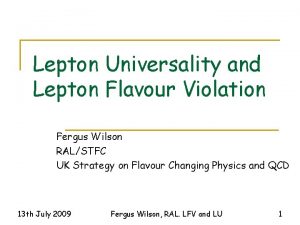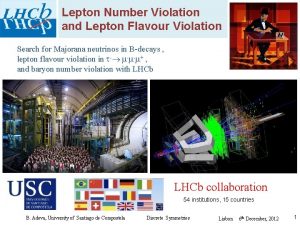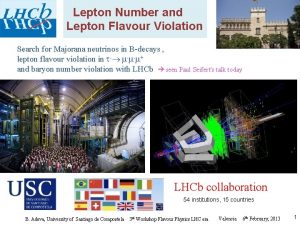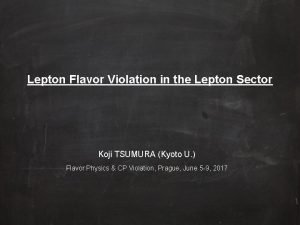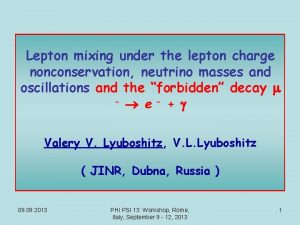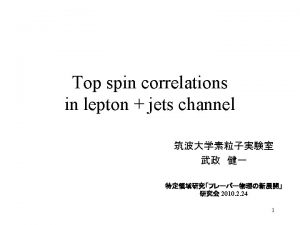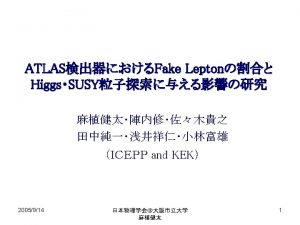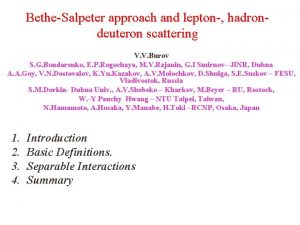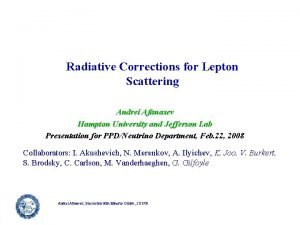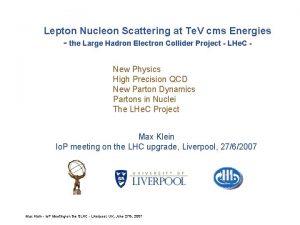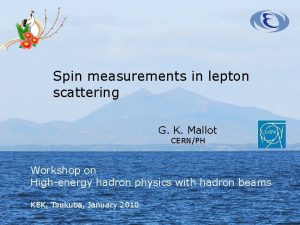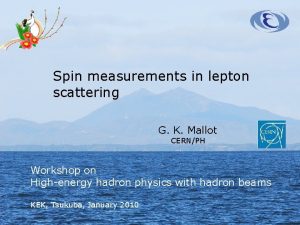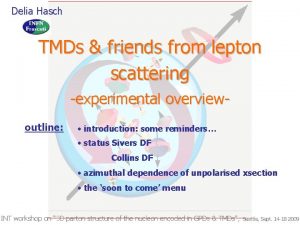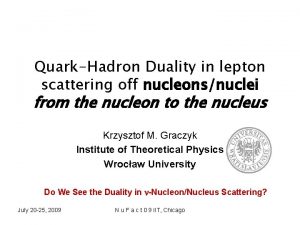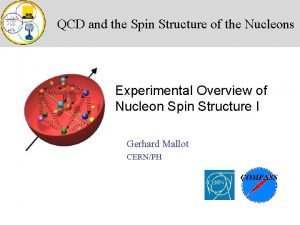Lepton scattering and the structure of nucleons and













![Matrix representation for M = [F(x)g+]T Bacchetta, Boglione, Henneman & Mulders PRL 85 (2000) Matrix representation for M = [F(x)g+]T Bacchetta, Boglione, Henneman & Mulders PRL 85 (2000)](https://slidetodoc.com/presentation_image/1b516ce22a65de4445c17cea557adc8e/image-14.jpg)








g+]T T-odd: g 1 T – i Matrix representation for M = [F[±](x, p. T)g+]T T-odd: g 1 T – i](https://slidetodoc.com/presentation_image/1b516ce22a65de4445c17cea557adc8e/image-23.jpg)






![Difference between F[+] and F[-] upon integration Back to the lightcone (theoretically clean) integrated Difference between F[+] and F[-] upon integration Back to the lightcone (theoretically clean) integrated](https://slidetodoc.com/presentation_image/1b516ce22a65de4445c17cea557adc8e/image-30.jpg)
![Difference between F[+] and F[-] upon integration In momentum space: gluonic pole m. e. Difference between F[+] and F[-] upon integration In momentum space: gluonic pole m. e.](https://slidetodoc.com/presentation_image/1b516ce22a65de4445c17cea557adc8e/image-31.jpg)
 p. FG Time reversal: F[+](x, p.](https://slidetodoc.com/presentation_image/1b516ce22a65de4445c17cea557adc8e/image-32.jpg)
![Time reversal constraints for fragmentation functions T-odd (imaginary) p. DG Time reversal: D[+]out(z, p. Time reversal constraints for fragmentation functions T-odd (imaginary) p. DG Time reversal: D[+]out(z, p.](https://slidetodoc.com/presentation_image/1b516ce22a65de4445c17cea557adc8e/image-33.jpg)
![Time reversal constraints for fragmentation functions T-odd (imaginary) p. DG out Time reversal: D[+]out(z, Time reversal constraints for fragmentation functions T-odd (imaginary) p. DG out Time reversal: D[+]out(z,](https://slidetodoc.com/presentation_image/1b516ce22a65de4445c17cea557adc8e/image-34.jpg)



- Slides: 37

‘Lepton scattering and the structure of nucleons and nuclei’ September 16 -24, 2004 Polarized structure functions Piet Mulders pjg. mulders@few. vu. nl

Content • Spin structure & transversity • Transverse momenta & azimuthal asymmetries • T-odd phenomena & single spin asymmetries

DIS • Known leptonic part • Completeness allows reduction in hadronic tensor to commutator [Jm(x), Jn(0)] • Known structure of current in terms of quarks • OPE • ….

Deep inelastic scattering (DIS)

Lepton tensor • Lepton tensor can also be expanded using the spacelike and timelike vectors • Tensor encompasses many ‘polarization options’

Polarized DIS

Semi-inclusive deep inelastic scattering • Known lepton part with much flexibility (unused in DIS) • Involves two hadrons and hence a much more complex hadronic tensor

SIDIS

(calculation of) cross section in DIS Full calculation + PARTON MODEL + + +…

Lightcone dominance in DIS

Leading order DIS • In limit of large Q 2 the result of ‘handbag diagram’ survives • … + contributions from A+ gluons ensuring color gauge invariance A+ Ellis, Furmanski, Petronzio Efremov, Radyushkin A+ gluons gauge link

Parametrization of lightcone correlator • M/P+ parts appear as M/Q terms in s • T-odd part vanishes for distributions but is important for fragmentation leading part Jaffe & Ji NP B 375 (1992) 527 PRL 71 (1993) 2547

Basis of partons § ‘Good part’ of Dirac space is 2 -dimensional § Interpretation of DF’s unpolarized quark distribution helicity or chirality distribution transverse spin distr. or transversity
![Matrix representation for M FxgT Bacchetta Boglione Henneman Mulders PRL 85 2000 Matrix representation for M = [F(x)g+]T Bacchetta, Boglione, Henneman & Mulders PRL 85 (2000)](https://slidetodoc.com/presentation_image/1b516ce22a65de4445c17cea557adc8e/image-14.jpg)
Matrix representation for M = [F(x)g+]T Bacchetta, Boglione, Henneman & Mulders PRL 85 (2000) 712 Quark production matrix, directly related to the helicity formalism Anselmino et al. § Off-diagonal elements (RL or LR) are chiral-odd functions § Chiral-odd soft parts must appear with partner in e. g. SIDIS, DY

Results for DIS • Structure functions in (sub)leading order in 1/Q • Two of three (Polarized) quark densities for each flavor: Not accessible in DIS

(calculation of) cross section in SIDIS “Full” calculation + PARTON MODEL + + +…

Lightfront dominance in SIDIS Three external momenta P Ph q transverse directions relevant q. T = q + x. B P – Ph/zh or q. T = -Ph /zh

Leading order SIDIS • In limit of large Q 2 only result of ‘handbag diagram’ survives • Isolating parts encoding soft physics ? ?

Lightfront correlators Collins & Soper NP B 194 (1982) 445 no T-constraint T|Ph, X>out = |Ph, X>in Jaffe & Ji, PRL 71 (1993) 2547; PRD 57 (1998) 3057

Distribution including the gauge link (in SIDIS) A+ One needs also AT G+a = +A a T ATa(x)= ATa(∞) + dh G+a Belitsky, Ji, Yuan, hep-ph/0208038 Boer, M, Pijlman, hep-ph/0303034 From <y(0)AT( )y(x)> m. e.

Parametrization of F(x, p. T) • • • Link dependence allows also T-odd distribution functions since T U[0, ] T = U[0, - ] Functions h 1 and f 1 T (Sivers) nonzero! These functions (of course) exist as fragmentation functions (no T-symmetry) H 1 (Collins) and D 1 T

Interpretation unpolarized quark distribution need p. T T-odd helicity or chirality distribution need p. T T-o dd need p T transverse spin distr. or transversity need p. T
g+]T T-odd: g 1 T – i](https://slidetodoc.com/presentation_image/1b516ce22a65de4445c17cea557adc8e/image-23.jpg)
Matrix representation for M = [F[±](x, p. T)g+]T T-odd: g 1 T – i f 1 T and h 1 L + i h 1 § p. T-dependent functions (imaginary parts) Bacchetta, Boglione, Henneman & Mulders PRL 85 (2000) 712

T-odd single spin asymmetry § Wmn(q; P, S; Ph, Sh) = -Wnm(-q; P, S; Ph, Sh) * § Wmn (q; P, S; Ph, Sh) = Wnm(q; P, S; Ph, Sh) _ __ __ § Wmn(q; P, S; Ph, Sh) = Wmn(q; P, -S; Ph, -Sh) ___ _ _ * * § Wmn (q; P, S; Ph, Sh) = Wmn(q; P, S; Ph, Sh) _ _ symmetry structure hermiticity parity time reversal • with time reversal constraint only even-spin asymmetries • the time reversal constraint cannot be applied in DY or in 1 -particle inclusive DIS or e+e • In those cases single spin asymmetries can be used to select T-odd quantities

Leptoproduction of pions H 1 is T-odd and chiral-odd


COLLINS ASYMMETRY RESULTS OF COMPASS Acoll depends on ph. T, zh, x. Bj with more statistics, the full analysis is foreseen from 2002 data: Acoll vs x. Bj ! n g Si

COLLINS ASYMMETRY RESULTS OF COMPASS from 2002 data: AColl vs zh ! n g Si all the tests made are consistent with the fact that systematic effects, if present, are smaller than statistical errors

Distribution including the gauge link (in SIDIS or DY) A+ SIDIS A+ DY SIDIS F[-] DY F[+]
![Difference between F and F upon integration Back to the lightcone theoretically clean integrated Difference between F[+] and F[-] upon integration Back to the lightcone (theoretically clean) integrated](https://slidetodoc.com/presentation_image/1b516ce22a65de4445c17cea557adc8e/image-30.jpg)
Difference between F[+] and F[-] upon integration Back to the lightcone (theoretically clean) integrated quark distributions twist 2 transverse moments measured in azimuthal asymmetries twist 2 & 3 ±
![Difference between F and F upon integration In momentum space gluonic pole m e Difference between F[+] and F[-] upon integration In momentum space: gluonic pole m. e.](https://slidetodoc.com/presentation_image/1b516ce22a65de4445c17cea557adc8e/image-31.jpg)
Difference between F[+] and F[-] upon integration In momentum space: gluonic pole m. e. (T-odd) Conclusion: T-odd parts are gluon-driven (QCD interactions)

Time reversal constraints for distribution functions T-odd (imaginary) p. FG Time reversal: F[+](x, p. T) F[-](x, p. T) F [+] F F [-] T-even (real) Conclusion: T-odd effects in SIDIS and DY have opposite signs
![Time reversal constraints for fragmentation functions Todd imaginary p DG Time reversal Doutz p Time reversal constraints for fragmentation functions T-odd (imaginary) p. DG Time reversal: D[+]out(z, p.](https://slidetodoc.com/presentation_image/1b516ce22a65de4445c17cea557adc8e/image-33.jpg)
Time reversal constraints for fragmentation functions T-odd (imaginary) p. DG Time reversal: D[+]out(z, p. T) D[-]in(z, p. T) D [+] D D [-] T-even (real)
![Time reversal constraints for fragmentation functions Todd imaginary p DG out Time reversal Doutz Time reversal constraints for fragmentation functions T-odd (imaginary) p. DG out Time reversal: D[+]out(z,](https://slidetodoc.com/presentation_image/1b516ce22a65de4445c17cea557adc8e/image-34.jpg)
Time reversal constraints for fragmentation functions T-odd (imaginary) p. DG out Time reversal: D[+]out(z, p. T) D[-]in(z, p. T) D [+]out D [-]out T-even (real) Conclusion: T-odd effects in SIDIS and e+e- are not related

C. Bomhof, P. J. Mulders and F. Pijlman PLB 596 (2004) 277 other hard processes • • • qq-scattering as hard subprocess insertions of gluons collinear with parton 1 are possible at many places this leads for ‘external’ parton fields to gauge link to lightcone infinity e. g.

other hard processes • qq-scattering as hard subprocess • insertions of gluons collinear with parton 1 are possible at many places • this leads for ‘external’ parton fields to gauge link to lightcone infinity • The correlator F(x, p. T) enters for each contributing term in squared amplitude with specific link • The link may enhance the effect of the (T-odd) gluonic pole contribution involving also specific color factors • Finding the right observables, however is crucial

Conclusions • Hard processes quark and gluon structure of hadrons (quark distributions, their chirality and transverse polarization) • Many new observables accessible when going beyond collinearity, often in combination with (transverse) polarization (among others the simplest access to transverse quark polarization) • Going beyond collinearity gives access to gluon dynamics in hadrons, which can be done in a controlled way via weighted asymmetries (twist limited, t 3), use of chirality, and the specific time-reversal behavior of single spin asymmetries.
 Nucleons are
Nucleons are Nucleons are
Nucleons are Leptons
Leptons Neutrino lepton number
Neutrino lepton number Lepton-photon
Lepton-photon Seth neddermeyer
Seth neddermeyer Quark lepton symmetry
Quark lepton symmetry Lepton tool
Lepton tool Cross sectional area
Cross sectional area Diffraction and scattering
Diffraction and scattering How to plot zimm plot in excel
How to plot zimm plot in excel Scattering of light in suspension
Scattering of light in suspension Scattering in central force field
Scattering in central force field Riley scattering
Riley scattering Raman vs rayleigh scattering
Raman vs rayleigh scattering Photodesintegration
Photodesintegration Scattering cross section in nuclear physics
Scattering cross section in nuclear physics Scattering matrix
Scattering matrix Dynamic scattering type lcd
Dynamic scattering type lcd Scattering reaction
Scattering reaction Photoelectric effect vs compton scattering
Photoelectric effect vs compton scattering Polarisation by scattering
Polarisation by scattering Wierl equation
Wierl equation Scattering matrix for a reciprocal network is:
Scattering matrix for a reciprocal network is: Scattering of light
Scattering of light Double scattering
Double scattering Refraksi gelombang elektromagnetik
Refraksi gelombang elektromagnetik Raman scattering definition
Raman scattering definition Coherent scattering
Coherent scattering Dynamic light scattering 원리
Dynamic light scattering 원리 Mie plot
Mie plot Elastic scattering vs inelastic
Elastic scattering vs inelastic Rutherford scattering
Rutherford scattering Rayleigh theory of light scattering
Rayleigh theory of light scattering Scattering matrix
Scattering matrix Pauli blocking of light scattering in degenerate fermions
Pauli blocking of light scattering in degenerate fermions Scattering matrix
Scattering matrix Double parton scattering
Double parton scattering

